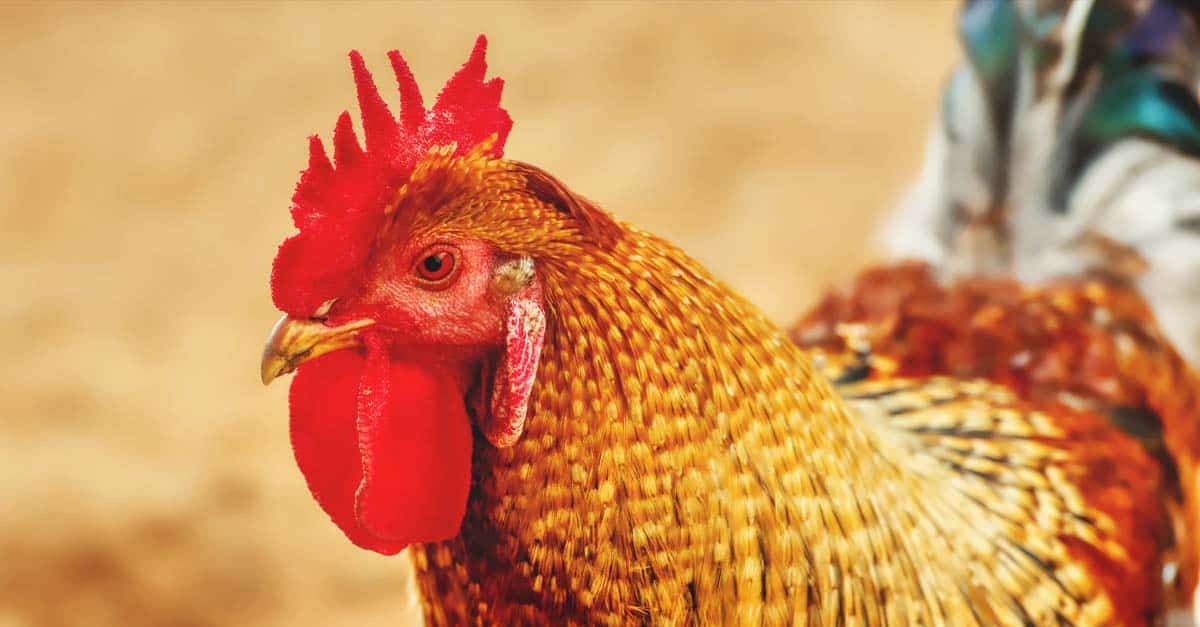We all know the Dr., don’t we? Green Eggs and Ham is a Suess children’s classic. So, in addition to our ham, we now have genuine green eggs. So, the egg’s interior isn’t green. That would be a little disgusting. I adore adding some splashes of color to my egg carton, and this green shell is simply stunning.
About Olive Egger Chickens
The American Poultry Association does not recognize Olive Eggers as a breed. In reality, they are not even a real breed. A blue egg layer is crossed with a dark brown egg layer to create Olive Egger chickens. Ameraucanas, Marans, Legbars, and Welsummers are some of the most popular breeds used to breed Olive Eggers.

Olive Egger Chicken Characteristics
A quick note about Olive Eggers before we go into it. Not every Olive Egger is the same because there are numerous distinct breeds that may be traced back to it.
One standard won’t work for all Olive Eggers, so don’t even try. Based on the various breeds utilized in Olive Egger breeding, I’ll categorize the varied traits.
Yet, I would recommend researching the breeds of your Olive Eggers if you know what breeds are in your flock.
1. Size and Weight
Olive Eggers are not particularly giant hens for the most part. Olive Egger chickens have a typical weight of 6 to 7 pounds, according to the USDA. The weight you should expect for roosters is 7-8 pounds.
The bird might be smaller if an Ameraucana is in the cross. The bird might be somewhat bigger if Marans are present in the cross.
2. Temperament
The majority of olive eggers are calm and friendly birds. Your Olive Eggers will be particularly bright hens if Welsummers are present. The likelihood of a broody Olive Eggers is quite great. Roosters make excellent flock guardians, although they are calm and passive.
3. Egg Production
Olive Eggers produce around 150-160 eggs per year, which is above-average. The Olive Egger’s production will most likely be a little bit higher if there is Ameraucana blood in it.
4. Meat Production
While they aren’t great producers of meat, Olive Egger chickens are a good choice. Because Marans are bigger birds, they are often used in the breeding process.
Breeding Olive Eggers may be a lot of fun, and it’s addictive. A few cockerels will fatten up nicely for the freezer if you find yourself with too many roosters, as most breeders do.
Taking Care of Olive Egger Chickens
1. Feeding and Nutritional Needs
Olive Eggers is definitely a food lover, as anything else. Their nutritional needs are the same, regardless of what breeds they come from. Give your young birds a high-quality chick starter/grower from hatch to 16 weeks of age.
Transition your hens to a full laying diet just before they begin to lay eggs. Give additional calcium to the shells of your lovely green eggs.
2. Housing and Fencing
In terms of space requirements, Olive Eggers aren’t too demanding. Four square feet per bird is more than enough space in the coop. A 10 square foot per bird is adequate space for your Olive Eggers if you decide to keep them in a cage rather than free ranging.
3. Health Issues and Care
Olive Eggers are a healthy breed of bird that is resistant to a variety of health concerns.
You’ll want to be on the lookout for scaly leg mites on certain Olive Eggers, as some will have feathered legs. Scaly leg mites can affect any birds, but you should be on the lookout for them on your feathered leg Olive Eggers.
4. Breeding
Breeding Olive Eggers is one of the most exciting breeding projects you can do. When breeding Olive Eggers, there are a slew of possible outcomes, some of which may be difficult to deal with and others that may be amazing.
It gets even more exciting if you’re interested in breeding for darker olive eggs. A first generation Olive Egger, also known as an F1 Olive Egger, is created by crossing a blue egg layer with a dark egg layer. You get a F2 Olive Egger by breeding an F1 Olive Egger with a dark egg layer. This will (hopefully) lay a darker egg than her mother.
F3, F4, and even F9 Olive Eggers may be created via this method multiple times, passing from generation to generation. The egg becomes darker with each generation, and the process gets increasingly difficult and eggciting (pardon the pun).
Why Easter Eggers aren’t among the chickens most often utilized to generate Olive Eggers is a question that arose in your mind. Although they are among the most popular blue egg layers, Easter Eggers are not recommended for Olive Egger breeding, but they may be used. Some brown egg genes are carried by Easter Eggers.
As a result, not every Easter Egger is guaranteed to produce colored eggs. A hen might not pass on a colored egg gene even if she produces colorful eggs. As a result, depending on the genes she passes, using an Easter Egger might lead to an Olive Egger or brown laying hen.
Breed Alternatives
1. Easter Eggers
Although Easter Eggers are a breed that does not guarantee to lay green eggs, they are worth owning. Easter Eggers placed a slew of different colored eggs, and it’s always thrilling to see what comes out. Easter Eggers have breed characteristics comparable to Olive Eggers, making them a good option if you prefer an alternative to Olive Eggers.
2. Ameraucanas
Ameraucana chickens are just as enjoyable to raise as Olive Eggers, but they don’t lay green eggs. These lovely birds have a lot in common with Olive Eggers when it comes to breeding. Ameraucanas may certainly suit your needs if you’re looking for a breeding project as engaging as Olive Eggers.
